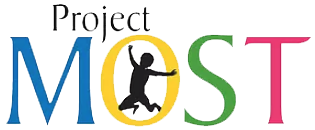What kind of bird is that?
Recognizing the songs of bird species local to you - a fun, free educational activity for children and families.
In the Summer of 2020, in the midst of a global pandemic, Project MOST successfully held our iGrow Learning Lab (summer camp) in East Hampton for 9 weeks. The days were hot - our daily weather logs attest to that - but the Covid-19 safety protocols that required all students to be outside actually worked in our favor when it came to total immersion in nature. One of our main objectives of iGrow Learning Lab is to encourage attendees to explore and discover the local fauna and flora. What better way than to be outside, listening, watching and observing for entire camp days at a time! (Before you worry, we had plenty of tents and mature trees for shade.)
Student drawing of a grackle, iGrow Summer Learning Lab 2020
To arm students with the equipment needed for some serious investigative work, I set every child up with a magnifying “bug box”, a magnifying glass and a monocular, which they constructed themselves. We then spent some time over the course of a few weeks scouring every inch of the ground on campus, mapping out the best ant and insect sites in our heads, discerning flight patterns of local birds and chattering away about other signs of wildlife. This set the stage for our “bird calls” lesson, among other things.
Mid-way through summer, I asked every camper to choose a local bird to draw. They’d been walking past a beautifully illustrated poster with images of our local birds since the beginning of camp - my goal was to subtly reinforce their knowledge of birds that they may have seen at home or around our town. I also supplied full-color photos of birds for them to use as reference when sketching. Finally, we’d been scoping out the local birds using monoculars (and sometimes binoculars), observing which trees the birds preferred and had planted homemade bird feeders around the property to encourage increased aviary activity.
After the sketches were completed and hung gallery-style in one of our large classrooms, I hauled out the mobile PA system, which was linked through wi-fi to my phone, and on which I had loaded the Cornell Lab of Ornithology’s bird guide website. Campers gathered around the speaker in their socially-distanced bubbles and leaned forwards to hear the first bird call. With the volume up to compete over gleeful camp noises around us, I pressed play for the first squawk of a Blue Jay. Eyes widened in excitement and recognition, and after a suspenseful moment, first and second grade students erupted into a cacophony of mimicked squawks (complete with neck-thrusts and flapping elbows) and exclamations of knowledge.
Students draw northern cardinals in an outdoor classroom, iGrow Summer Learning Lab 2020
With each bird song, campers guessed what kind of bird they were hearing and told stories about where they’d heard these songs before. The excitement was palpable, and I was so proud that they were able to make connections between what was coming from the speaker and what they’d heard in their lives, often without realizing what kinds of birds were singing. At one point, a bird up in the trees responded with a volley of calls, causing us to laugh in amazement.
Portion of gallery wall of students’ drawings of local birds, iGrow Summer Learning Lab 2020
So, I strongly recommend visiting Cornell’s “Bird Guide” site and having a little fun identifying the birds around you. The site covers more than six hundred North American species, so there’s something for everyone, everywhere.
Here are some local East Hampton favorites (click on the species name to be brought to the link):
Blue Jay
American Robin
House Finch
Northern Cardinal
Field Sparrow
American Crow
Common Grackle
Piping Plover
This post was written by Jacqueline Gravina-Wohlleb. She holds a M.Sc. in Education, a B.A. in Art and has 20 years of experience teaching Pre-Kindergarten through adult levels. Jacqueline is the Community Program Coordinator at Project MOST.



